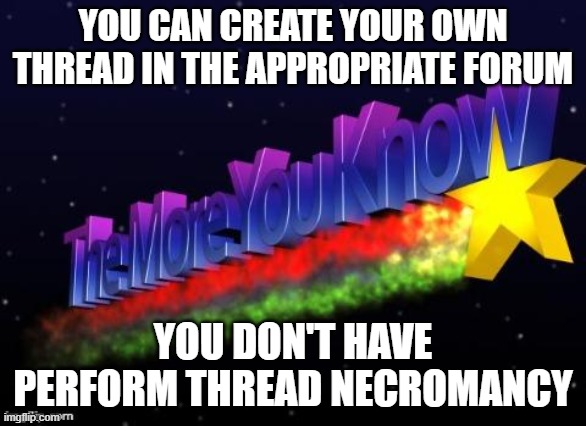Joben Magooch
Well-known member
Hi all,
Apologies if this is out of place but I thought there would likely be some folks here who could get me pointed in the right direction....Feel free to remove if needed.
Anyways...I am having an issue with a Mooer E-Lady flanger I bought recently.
It passes signal just fine - both bypassed or activated - but there's just no effect. When "on" it dulls the highs a bit, but other than that, nothing - no flanging, and none of the controls have any effect.
So, I ordered it from a Chinese Mooer distributor, only was around $40 USD new. But it wasn't really feasible to send it back to them in China for repair, so they just gave me a refund. I would really like to be able to get it repaired though, rather than just toss it or whatever - but there's no shops in my area that really do that sort of repair, so I'm figuring I've got nothing to lose and could take a crack at it myself.
Just need a bit of direction. I'm a fairly competent solderer (I guess that's a word) but my knowledge of circuit design is quite rudimentary. It's my understanding that the E-Lady uses BBD chip(s?) and I believe they're MN3207, but I'm not 100% sure on that. Like I said - don't know much about the design - but my first guess would be that the BBD(s) are bad and/or improperly calibrated/biased. I did test around with the internal trimpots a bit (assuming they were indeed for biasing the chip) but got no change at any setting there, either.
So, I don't know, maybe it's a lost cause. Don't really wanna pay anyone to repair it (I figure there's probably not anyone who could fix it cheaper than $40, so it'd just make sense to buy a new one) but not really sure where to start with it myself. So if anyone has any direction or ideas for where to start, feel free to send them my way. I can always get some gut shot photos too if that would help (FWIW, to my eye at least there wasn't anything noticeably wrong - bad joints or jumped traces or whatever, but who knows). And again - if out of place, feel free to remove. Thanks all!
Apologies if this is out of place but I thought there would likely be some folks here who could get me pointed in the right direction....Feel free to remove if needed.
Anyways...I am having an issue with a Mooer E-Lady flanger I bought recently.
It passes signal just fine - both bypassed or activated - but there's just no effect. When "on" it dulls the highs a bit, but other than that, nothing - no flanging, and none of the controls have any effect.
So, I ordered it from a Chinese Mooer distributor, only was around $40 USD new. But it wasn't really feasible to send it back to them in China for repair, so they just gave me a refund. I would really like to be able to get it repaired though, rather than just toss it or whatever - but there's no shops in my area that really do that sort of repair, so I'm figuring I've got nothing to lose and could take a crack at it myself.
Just need a bit of direction. I'm a fairly competent solderer (I guess that's a word) but my knowledge of circuit design is quite rudimentary. It's my understanding that the E-Lady uses BBD chip(s?) and I believe they're MN3207, but I'm not 100% sure on that. Like I said - don't know much about the design - but my first guess would be that the BBD(s) are bad and/or improperly calibrated/biased. I did test around with the internal trimpots a bit (assuming they were indeed for biasing the chip) but got no change at any setting there, either.
So, I don't know, maybe it's a lost cause. Don't really wanna pay anyone to repair it (I figure there's probably not anyone who could fix it cheaper than $40, so it'd just make sense to buy a new one) but not really sure where to start with it myself. So if anyone has any direction or ideas for where to start, feel free to send them my way. I can always get some gut shot photos too if that would help (FWIW, to my eye at least there wasn't anything noticeably wrong - bad joints or jumped traces or whatever, but who knows). And again - if out of place, feel free to remove. Thanks all!



